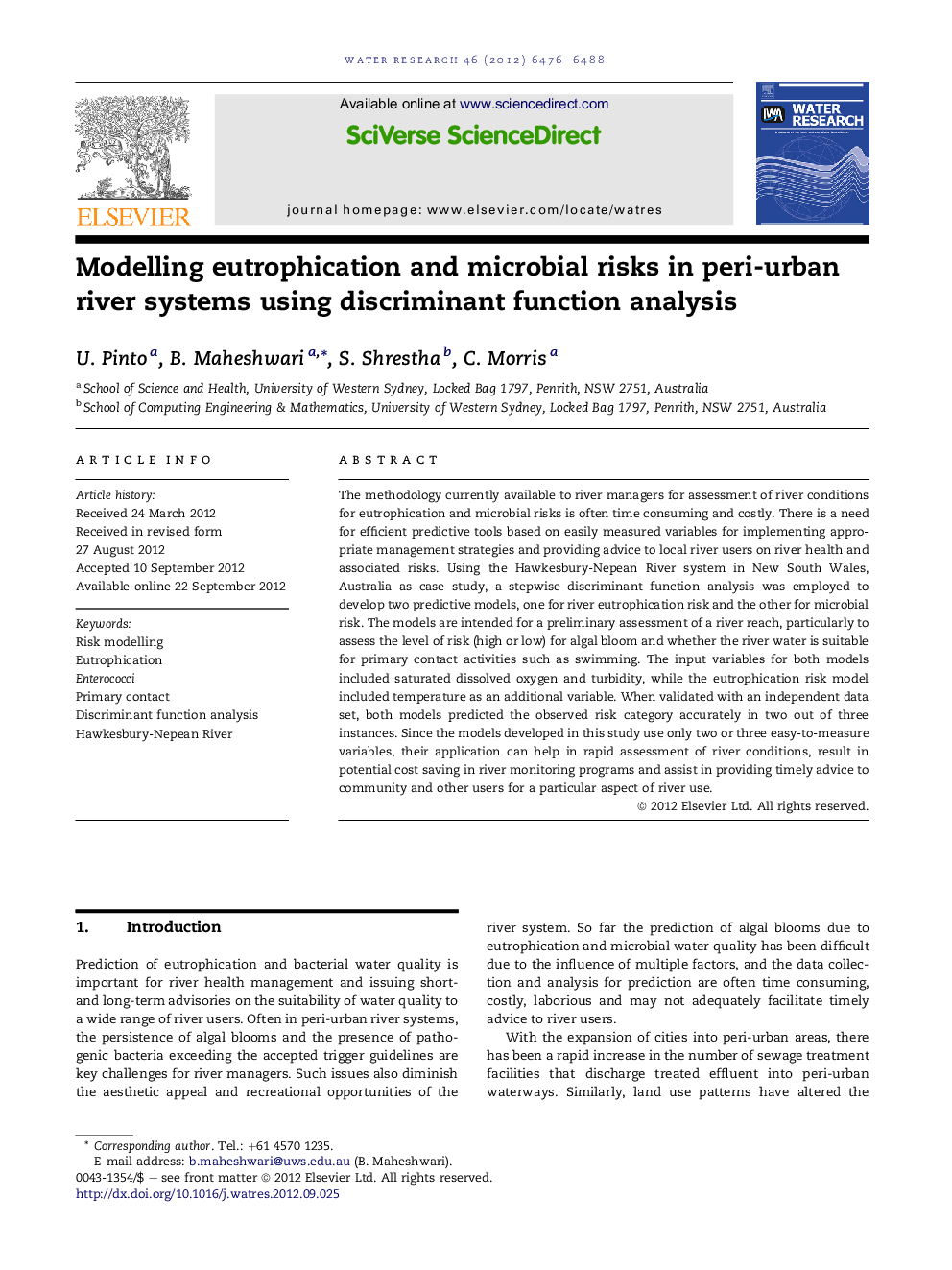| کد مقاله | کد نشریه | سال انتشار | مقاله انگلیسی | نسخه تمام متن |
|---|---|---|---|---|
| 4482463 | 1316859 | 2012 | 13 صفحه PDF | دانلود رایگان |

The methodology currently available to river managers for assessment of river conditions for eutrophication and microbial risks is often time consuming and costly. There is a need for efficient predictive tools based on easily measured variables for implementing appropriate management strategies and providing advice to local river users on river health and associated risks. Using the Hawkesbury-Nepean River system in New South Wales, Australia as case study, a stepwise discriminant function analysis was employed to develop two predictive models, one for river eutrophication risk and the other for microbial risk. The models are intended for a preliminary assessment of a river reach, particularly to assess the level of risk (high or low) for algal bloom and whether the river water is suitable for primary contact activities such as swimming. The input variables for both models included saturated dissolved oxygen and turbidity, while the eutrophication risk model included temperature as an additional variable. When validated with an independent data set, both models predicted the observed risk category accurately in two out of three instances. Since the models developed in this study use only two or three easy-to-measure variables, their application can help in rapid assessment of river conditions, result in potential cost saving in river monitoring programs and assist in providing timely advice to community and other users for a particular aspect of river use.
Figure optionsDownload high-quality image (96 K)Download as PowerPoint slideHighlights
► Models for eutrophication risk and microbial risk for river system were developed.
► A stepwise discriminant function analysis approach was used in the modelling.
► Both models predicted accurately in two out of three instances.
► The models have potential in cost saving for river monitoring programs.
Journal: Water Research - Volume 46, Issue 19, 1 December 2012, Pages 6476–6488